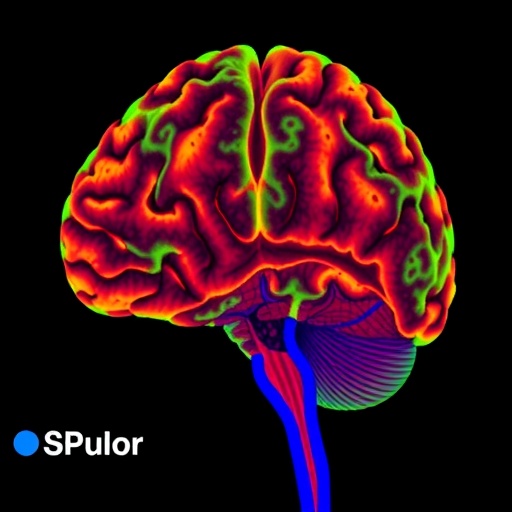
In recent breakthroughs that could revolutionize the detection and management of brainstem gliomas, researchers have unveiled a serum metabolic profiling approach that provides unprecedented diagnostic, prognostic, and monitoring capabilities for these elusive tumors. Brainstem gliomas, notoriously difficult to biopsy and treat due to their critical location in the brainstem, have long posed a challenge for clinicians. The new study leverages cutting-edge metabolomic techniques to reveal a distinctive serum metabolic signature, enabling doctors to peer into the biochemical environment of these tumors using a minimally invasive blood test.
The heart of this advancement lies in the detailed analysis of small-molecule metabolites circulating in patient serum—chemical fingerprints that reflect complex biological processes. By profiling a broad spectrum of metabolites, researchers can detect subtle yet telling disturbances in cellular metabolism driven by the tumor’s presence and progression. This metabolomic approach, conducted through state-of-the-art mass spectrometry and computational analysis, transcends the limitations of conventional imaging and histopathology, which often fall short in the brainstem’s intricate anatomy.
Traditional diagnosis of brainstem gliomas depends heavily on magnetic resonance imaging (MRI), which, while non-invasive, lacks specificity and sensitivity in distinguishing tumor grade and activity. Biopsies, on the other hand, carry significant risks due to the brainstem’s vital functions. The serum metabolic profiling technique offers an exquisite balance—capturing molecular-level information outside the central nervous system, enabling repeated sampling over time without additional harm to the patient.
.adsslot_5LgwjXTCM2{width:728px !important;height:90px !important;}
@media(max-width:1199px){ .adsslot_5LgwjXTCM2{width:468px !important;height:60px !important;}
}
@media(max-width:767px){ .adsslot_5LgwjXTCM2{width:320px !important;height:50px !important;}
}
ADVERTISEMENT
This study’s methodology encompassed a comprehensive metabolomic examination of serum samples collected from a diverse cohort of brainstem glioma patients alongside matched healthy controls. Utilizing ultra-high-performance liquid chromatography coupled with tandem mass spectrometry (UHPLC-MS/MS), researchers quantified hundreds of metabolites spanning amino acids, lipids, nucleotides, and energy metabolites. Advanced machine learning algorithms were then applied to distill this complex dataset into a robust metabolic signature characteristic of brainstem glioma.
One of the groundbreaking findings is that this serum metabolic profile not only detects the presence of brainstem gliomas but also correlates strongly with tumor grade and patient prognosis. High-grade gliomas exhibited distinct alterations in metabolites associated with energy metabolism and oxidative stress, reflecting the aggressive nature and metabolic reprogramming of these malignant cells. Conversely, lower grade gliomas showed subtler metabolic disturbances, suggesting potential for stratifying patients and tailoring therapeutic approaches accordingly.
Beyond diagnosis and prognostication, the study highlights the potential of serum metabolic profiling for real-time monitoring of tumor dynamics. Serial blood draws over the course of treatment revealed metabolite fluctuations that paralleled tumor response or progression, indicating that this approach could serve as a minimally invasive biomarker to guide therapeutic decisions. This capability is especially valuable in brainstem gliomas, where repeated imaging and invasive biopsies are limited by risk and feasibility.
The biochemical pathways implicated in the metabolic profiling results provide important insights into brainstem glioma biology. Alterations were observed in key metabolic routes such as glycolysis, glutaminolysis, and lipid metabolism, reflecting the tumor’s heightened demands for energy and biosynthetic precursors. These findings reinforce the emerging concept of metabolic reprogramming as a hallmark of glioma pathophysiology and open new avenues for targeted metabolic therapies.
Importantly, the specificity and sensitivity metrics reported surpass those of previously investigated liquid biopsy approaches for brain tumors. This advancement owes much to the comprehensive nature of serum metabolomics and the integration of sophisticated statistical and computational tools that can unravel multidimensional data patterns imperceptible to human analysis alone. The inclusion of robust validation cohorts further strengthens the clinical applicability of these findings.
The implications of this work extend beyond brainstem gliomas. The concept of leveraging systemic biofluids like serum for metabolic signatures could transform diagnostics in other central nervous system malignancies and neurological disorders. As metabolomics platforms become more accessible and affordable, the prospect of routine, blood-based oncologic surveillance is rapidly becoming tangible.
Moreover, the non-invasive nature of serum metabolic profiling alleviates the inherent risks associated with neuro-oncologic procedures. This is particularly significant for pediatric populations, in whom brainstem gliomas are relatively prevalent and clinical options remain limited. Early diagnosis and dynamic monitoring could improve survival outcomes and quality of life by enabling timely intervention adjustments.
The authors acknowledge that further studies are warranted to refine metabolic biomarkers, examine longitudinal patient cohorts, and integrate metabolomic data with genomic and proteomic profiles for a multi-omic approach. This integrative strategy promises to unravel complex tumor heterogeneity and resistance mechanisms, enhancing personalized medicine in neuro-oncology.
While metabolomics research has faced challenges in clinical translation due to technical complexity and data variability, this study exemplifies meticulous experimental design and rigorous analytical pipelines, setting a new standard for metabolomic applications in oncology. The combination of cutting-edge mass spectrometry with artificial intelligence-driven data interpretation demonstrates the power of interdisciplinary approaches.
In summary, serum metabolic profiling emerges as a powerful diagnostic and monitoring tool for brainstem gliomas, addressing critical unmet needs in neuro-oncology. The ability to discern tumor presence, grade, and progression from a simple blood draw marks a paradigm shift, offering hope for earlier intervention and improved patient management. This innovative methodology highlights the intersection of metabolomics, bioinformatics, and clinical neuroscience as a beacon for future cancer diagnostics.
As this field accelerates, collaboration between clinicians, biochemists, data scientists, and engineers will be key to translating these discoveries into standardized tests available in clinical practice. The promise of metabolite-based liquid biopsies heralds a future where precision neuro-oncology is accessible, less invasive, and profoundly more informative.
In the coming years, advancements in portable mass spectrometry and rapid metabolite quantification might even allow point-of-care testing for brainstem glioma patients, facilitating decentralized and immediate clinical decision-making. Such developments underscore the transformative potential of metabolic biomarkers as frontline tools in challenging neuro-oncologic diseases.
For patients and families affected by brainstem gliomas, this research offers a beacon of hope—a glimpse into a future where diagnosis is swift, monitoring continuous, and treatments tailored with molecular precision, potentially turning the tide on a historically devastating diagnosis.
Subject of Research: Serum metabolic profiling for diagnosis, prognosis, and monitoring of brainstem gliomas.
Article Title: Serum metabolic profiling enables diagnosis, prognosis, and monitoring for brainstem gliomas.
Article References:
Li, K., Wang, R., Gu, Z. et al. Serum metabolic profiling enables diagnosis, prognosis, and monitoring for brainstem gliomas.
Nat Commun 16, 6108 (2025). https://doi.org/10.1038/s41467-025-61163-9
Image Credits: AI Generated
Tags: advanced diagnostic methods for gliomasbrainstem glioma diagnosiscellular metabolism disturbanceschallenges in brainstem tumor treatmentmass spectrometry in cancer researchmetabolic signature detectionmetabolomic techniques in oncologyminimally invasive blood testsnon-invasive glioma assessmentprecision medicine in neuro-oncologyserum metabolic profilingtumor monitoring and management





